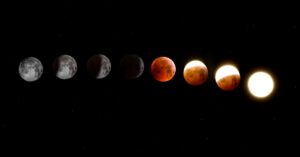This site contains affiliate links to products. I may receive a commission for purchases made through these links.
If you’re an astronomy enthusiast like me, you know that dew can be a real party pooper. It’s a common problem that can fog up your telescope’s lens, reducing the quality of your stargazing experience. But don’t worry, I’ve got a solution for you – a homemade dew shield.
A dew shield is a simple yet effective tool that can keep your lens dew-free for an extended period. It’s easy to make, and the best part is, it doesn’t break the bank. In this article, I’ll guide you step-by-step on how to make a dew shield for your telescope.
So get ready, because we’re about to dive into a DIY project that will significantly enhance your night sky observations. Trust me, once you’ve made your own dew shield, you’ll wonder how you ever stargazed without it.
Gathering the Materials
Getting your materials together is the first key step in making a dew shield for your telescope. Don’t worry though, you won’t need expensive, obscure items to build this. Typically, you’d find most of these items lying around in your own home, keeping the project cost-effective.
Foam crafting sheet: This forms the core of your dew shield. A thicker sheet tends to be more durable and efficient in preventing dew. Something like a 3mm thick crafting foam should suffice.
Self-adhesive Velcro strips: These are for securing the shield around your telescope. Make sure the Velcro is capable of holding the weight of the foam sheet when wrapped around the telescope.
Heavy duty scissors: You’ll need this to cut the materials to size.
Adhesive spray and paintbrushes: To apply adhesive spray for strong adhesion if you prefer not to use the sticky back on the foam sheet. Choose an adhesive that’s strong, yet temporary, allowing for easy adjustments or replacements in the future.
Acrylic black paint: To improve the aesthetics of the shield and also to help absorb heat and humidity that can contribute to dew formation.
Remember, quality is key in choosing your materials, and better quality materials mean a more reliable and longer-lasting dew shield.
So, with these essential materials, you are all set to move on to the next exciting stage – cutting and crafting your homemade dew shield. It promises to be a gratifying DIY experience, and you’ll soon be on your way to clearer, dew-free stargazing nights. Certainly, it’s time to put your creative side to work, enhancing not just your telescope but also your night sky observing sessions.
Measuring and Cutting the Cardboard
After you’ve gathered your materials, the first step is to measure and cut your cardboard to the correct size. You’ll need a long ruler or tape measure for this part of the process. The goal is to make the dew shield long enough to wrap around the front of your telescope, with a bit of overlap for the Velcro to secure it.
Take your tape measure and wrap it around the front of your telescope. Ensure you record the telescope’s circumference accurately. This measurement will tell you how long to make your strip of cardboard.
Once you have the measurement, jot it down – you won’t want to forget it! Now, lay your cardboard on a flat surface, like a table or counter. Let’s say your telescope has a circumference of 30 inches. If that’s the case, you would mark out a strip of cardboard that is 31 inches long. That extra inch will be for the overlap.
The width of your dew shield depends on the size of your telescope. But generally, I’d recommend a width between 5 to 8 inches. This size seems to work best for most scopes. It’s wide enough to prevent dew from forming but not so wide that it gets in the way of your viewing.
The final step in this phase is to cut out your strip of cardboard. Use heavy-duty scissors or a sharp knife to cut the cardboard, ensuring your lines are straight and neat. Be extra cautious while cutting – a jagged line won’t just look sloppy, it could also cause the dew shield to fit incorrectly on your telescope.
At this point, it’s all about precise measurements and clean cuts. It’s time to delicately put the scissors or knife to work, keeping your focus on getting that perfect shape and size for your custom dew shield. The attention to detail in this step sets the tone for a successful dew shield, which promises clearer and dew-free stargazing nights.
Adding Velcro Strips for Adjustability
You’ve carefully measured, marked, and cut your dew shield. Now, let’s move onto the next stage of the process. This part of our guide focuses on Adding Velcro Strips for Adjustability.
When it comes to dew shields, one size doesn’t always fit all. What we need here is a way to adjust the shield, a means to make it adaptable to telescopes of different sizes. That’s where Velcro comes in handy. These strips provide the adjustable yet firm grip required to keep the shield securely attached while handling or transporting the telescope.
Time to get your hands on some Velcro, folks. I recommend strong adhesive-backed strips. They’re sturdy and easy to attach. Make sure you’ve got enough length to span across the entire height of your dew shield. Then, you’re going to stick them onto the sides of the cardboard strip that correspond to the overlap section.
Try to maintain an accurate alignment when attaching the Velcro to ensure a snug fit. Take one side of the strip and attach it to the external side of one end of the cardboard. Do the same with the other side, but this time, stick it to the internal side. This allows you to roll the cardboard with Velcro sections meeting each other, forming a circle that’s adjustable and fits your telescope perfectly.
Remember this is a DIY project. It’s okay if things don’t turn out perfect at the first attempt. Don’t be discouraged, you’re doing great! The key is to learn and evolve with each step.
Don’t forget to apply pressure all over the Velcro strips after attaching them. It aids in creating a strong bond between the adhesive and the cardboard. Also, let it sit for some time before starting the testing phase. This “wait period” helps the Velcro strips adhere securely.
Attaching the Dew Shield to Your Telescope
Once your DIY dew shield is ready, it’s time to connect it to your beloved telescope. Don’t sweat it; it’s not as tricky as it might seem at first glance. Neither does it require any complex equipment or special skills. A little patience, mindfulness, and your hands are all that’s needed for this final, rewarding part of the DIY dew shield process.
Get your DIY dew shield and your telescope. Firmly hold the dew shield and align its open edge with the front end of your telescope — the end from which you observe the night skies. Here are a few key steps to remember when attaching the dew shield to your telescope:
- Ensure correct alignment. The Velcro strips on the dew shield should wrap around the circumference of the telescope tube neatly.
- Apply light pressure on the Velcro. This will enable the Velcro to lock under the telescope’s surface tightly.
- Adjust as needed. If you notice any raised edges or misalignments, address them immediately. You want a snug fit.
Once attached, do a quick inspection of the dew shield. You’re seeking uniform coverage with no noticeable bulges or sagging. It’s essential for the dew shield to have a secure attachment, as this will help it effectively prevent dew or frost accumulation on your telescope’s optics.
But don’t be disheartened if things aren’t perfect on your first try — that’s totally normal when you’re in the throes of a DIY project. Don’t hesitate to re-adjust or re-attach the dew shield as needed. The objective here is to learn, fine-tune, and get a hang of the process.
All said and done, making a dew shield for your telescope is certainly rewarding. Especially given the fact that it significantly enhances the longevity and durability of your telescope’s optics. And to top it all, the sense of accomplishment you feel after successfully finishing a DIY project like this is just unparalleled.
Testing and Refining the Dew Shield
Following our step-by-step instructions, you’ve successfully attached your self-made dew shield to your telescope. But how well does it perform? That’s where this crucial part comes in: testing and refining.
During a cool, humid night, take your telescope out for a spin. Observation and assessment need to be your top priorities during this trial run. With the dew shield attached, focus on the level of condensation on your telescope’s lenses. Notice any reduction? That’s a result of your handiwork!
There’s a likelihood that you may notice some minor setbacks. Remember, perfection takes time. Don’t get disheartened if you spot any light leakage or your dew shield not fitting as snuggly as it should. These are just opportunities to refine your DIY dew shield further.
Let’s dive into solving a couple of common issues you might encounter.
- Light Leakage: If you’re noticing any unwanted light seeping in, try adjusting the fit of your shield or adding an additional layer of dark material inside the shield to trap light. In most cases, this should solve your problem.
- Loose Fit: Is your dew shield not staying in place? You might need to re-apply or adjust the adhesive foam to achieve a more snug fit. Always remember, securing it tight, but not so tight that you risk damaging your telescope, is the key.
Following these pointers, assess the dew shield’s performance, and make necessary modifications. If needed, go through iterations of this “trial and refine” process until you’re satisfied with the results. Your patience will pay off ultimately!
Continuing from here, let’s delve into some additional Pro Tips and Tricks for Effective Usage of your DIY dew shield. These will help you maximize the shield’s performance and extend its longevity, ensuring you get the most out of your DIY project.
Conclusion
I’ve shown you how to make your own dew shield, and it’s not as daunting as it might seem. Yes, there might be a few hiccups along the way, like light leakage or a loose fit. But don’t let that discourage you. With a little patience and some fine-tuning, you’ll be able to craft a dew shield that’s perfect for your telescope.
Remember, it’s all about trial and error. So take your telescope out, test your dew shield, and make the necessary adjustments. Soon enough, you’ll have a reliable, efficient dew shield that keeps your lenses clear on those cool, humid nights. Stay tuned for more pro tips and tricks to get the most out of your DIY dew shield in the next section. Happy stargazing!




